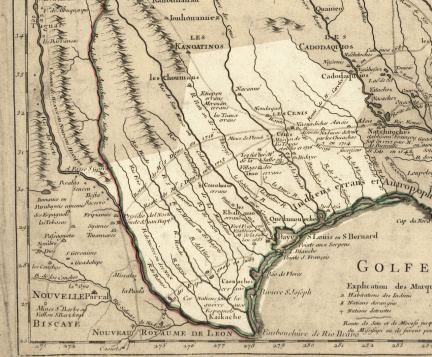Profession Political | Name Carlos Franquis | |
 | ||
Spouse(s) Angela de Alarcon y Ocana Succeeded by | ||
Carlos Benites Franquis de Lugo, (1691–?) was a Spanish governor of Texas between 1736 and 1737. Despite being sent to Texas to collaborate with Manuel de Sandoval in the administration of that province, he instead filed criminal charges against Sandoval and sent him to prison. He then reduced the number of guards watching the missions from three to one per mission. Ultimately, his economic mismanagement of Texas led the province to near bankruptcy. He implemented the first "dula" for the distribution of river waters and granted lands to retired soldiers and military widows. He was arrested and accused of arrogant behavior. After he stepped down as governor in September 1737, he was found not guilty in his trial and became an officer of the garrison of Veracruz, Mexico.
Contents
Early years
Franquis was born in La Orotava, Tenerife (Canary Islands, Spain) in 1691. When he was young, he moved to Havana, Cuba, where he married Ángela de Alarcón y Ocaña. In 1736, Philip V appointed him governor of the province of Tlaxcala, Mexico. However, when Franquis arrived in Mexico, he learned that the office of governor of Tlaxcala was not yet vacant, as it was still being held by his predecessor. Because Franquis could not take office, the Viceroy, Archbishop Vizarrón, appointed him governor ad interim of Texas to collaborate with Manuel de Sandoval to improve the administration in that province.
On September 26, 1736, Franquis came to San Antonio. He refused to show his Spanish credentials. From the beginning, he rejected the civil and religious authorities in the area. In 1737, Franquis deposed Sandoval of his charge, filing criminal charges against him. Accused of seven counts of official misconduct, Sandoval was later sent to Prison. In doing so, Franquis replaced Sandoval in the government of Texas.
Governor of Texas
Upon taking office, Franquis' economic mismanagement led the province to near bankruptcy, and he became the enemy of almost every missionary and presidio official between Saltillo and Texas. Franquis ordered the friars to reduce the number of guards established in each the mission, from three to one, even though the soldiers were very important to the missions because they contributed to the maintenance of "discipline" and the "daily tasks" of "returning the runaways". On April 1737, the governor removed all of the mission guards. On June 8, 1737, San Francisco mission was abandoned and the 230 Native Americans who worked there recovered their freedom, while the other religious establishments had lost many Native American workers (including at the San Juan Capristano mission, where most of the workers abandoned the mission). Although the Viceroy ordered Franquis to restore the mission guards, he decided to ignore the order. However, accusations were issued against him because he had taken the Native Americans from the missions to places located outside of their lands, so they fled to the woods and informed the unconverted Native Americans (the Native Americans workers of the missions had been convert to Christianity) about their violent treatment by the governors.
Shortly after he arrived in San Antonio, he conceded three lots of land to widows of military members and another two to military veterans. For instance, he implemented the first "dula" (a piece of land that receives irrigation from a ditch) for the distribution of rivers. This suggests his involvement in the institutionalization of the distribution of water during the early years of colonization.
Shortly thereafter, an investigation of Franquis's administration took place, which ended on July 9, 1737.
Last years
After the investigation, Franquis was arrested and accused of arrogant behavior. In September 1737, he stepped down as governor and retired to San Juan Bautista, California, where he defected and settled in Mexico City.
Franquis was found not guilty in his trial. A little later, he settled in Veracruz, Mexico, and became an officer of the garrison of that city. Finally, he returned to the regiment of Savoy in Spain. The place and date of his death are not known, but it is thought that he died in Mexico or Spain.
